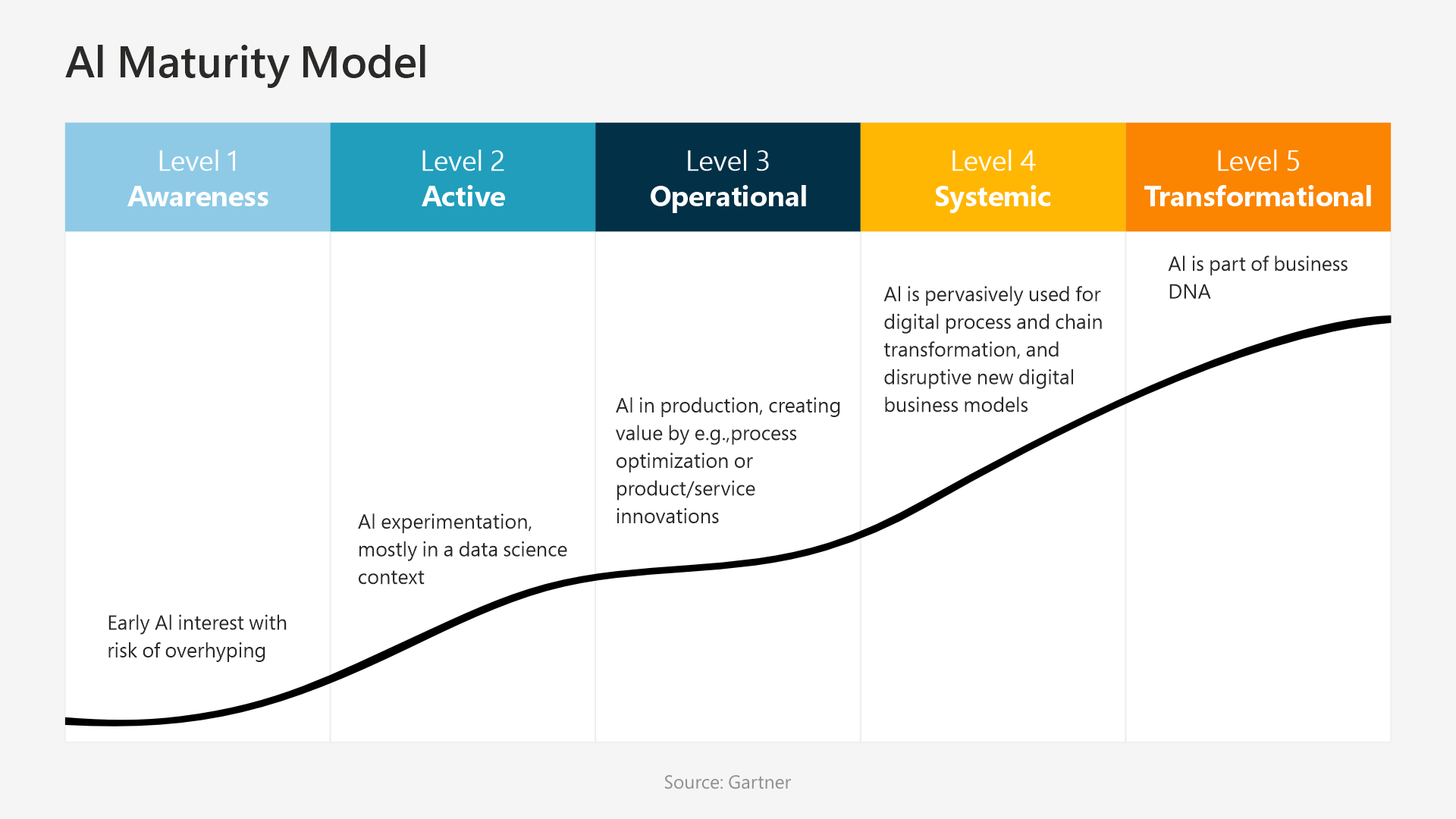
Artificial Intelligence (AI) is rapidly reshaping industries worldwide, providing businesses with innovative opportunities to boost efficiency, foster innovation, and make better decisions. However, adopting AI isn't a straightforward, one-time effort. Organizations must progress through various stages of AI maturity, gradually building their capabilities to fully leverage AI's potential. Recognizing these AI maturity levels is essential for companies to effectively plan, execute, and scale their AI strategies.
In this article let’s explore what is AI Maturity level, Industry definitions of maturity level, challenges organizations face, Benefits, and how to move up the AI maturity level.
What is AI Maturity?
AI Maturity refers to the stage of development that organizations go through as they adopt AI technologies and integrate them into their operations, culture, and decision-making process. It encompasses how well an organization is equipped to leverage AI, including its technical capabilities, data infrastructure, governance, and workforce readiness. It’s a tool that helps us measure AI strategically— brings new value to companies.
AI Maturity Levels:
Each organization will use AI in different ways depending on the nature of business and customer needs. Gartner has released an AI Maturity model that segments companies into five levels of maturity regarding an organization’s use of AI. (graph source: Gartner)

Level 1 - Awareness: Conversations about AI are happening, but not in a strategic way, and no pilot projects or experiments are taking place.
Level 2 - Active: AI is appearing in proofs of concept and possibly pilot projects. Meetings about AI focus on knowledge sharing and the beginnings of standardization.
Level 3 - Operational: At least one AI project has moved to production, and best practices, experts, and technology are accessible to the enterprise. AI has an executive sponsor and a dedicated budget.
Level 4 - Systemic: Every new digital project at least considers using AI, and new products and services have embedded AI. Employees in process and application design understand the technology. AI-powered applications interact productively within the organization and across the business ecosystem.
Level 5 - Transformational: AI is a part of business DNA, it goes into every business process, and it is a natural framework to work with. Every worker knows the strengths and weaknesses of AI.
Challenges in Measuring AI Maturity
Measuring AI maturity can be quite challenging due to several factors. Let’s look at some of the key challenges:
Despite these challenges, measuring AI maturity is essential for organizations to understand their current capabilities and plan their AI journey effectively. By addressing these challenges, organizations can develop more accurate and actionable AI maturity assessments.
Benefits of AI Maturity Models
Understanding and assessing an organization’s AI maturity level is essential for several reasons:
Moving up the AI Maturity Ladder
Now, let’s discuss how an organization can progress to the next level, regardless of its starting point.
Advancing AI maturity is essential for staying competitive in today’s digital landscape
Conclusion
The path to AI maturity is not a straight line, and organizations encounter unique challenges at each stage. However, by identifying their position on the AI maturity spectrum, businesses can make smarter choices regarding AI investments, data management, and scaling their AI initiatives. As companies advance through the maturity levels, they unlock increasing value, transforming their operations and competitiveness in an AI-driven landscape.
Follow us: